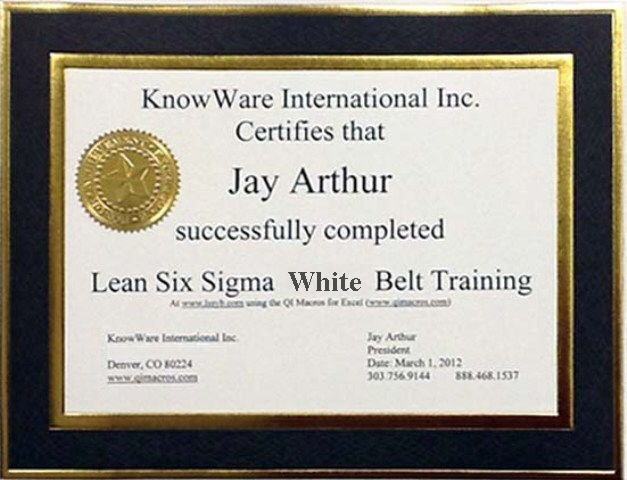Lean Six Sigma White Belt Exam
Allow an hour to take this exam. You cannot save your answers part way through and come back later. If you need to start and stop, we suggest printing it out and then inputting your answers all at once.
- Cost is $75 USD to cover administrative costs of issuing White Belt Certificate.
- You will only be asked to submit payment after you have successfully completed the exam (score of 80% or better).
Hint: I'm a fan of "All of the above" answers.

Questions
You are almost done! To receive your certification, complete the order process on the next page.
NOTE: If your company would like to certify 50+ White Belts using this curriculum, give us a call to find out how.

